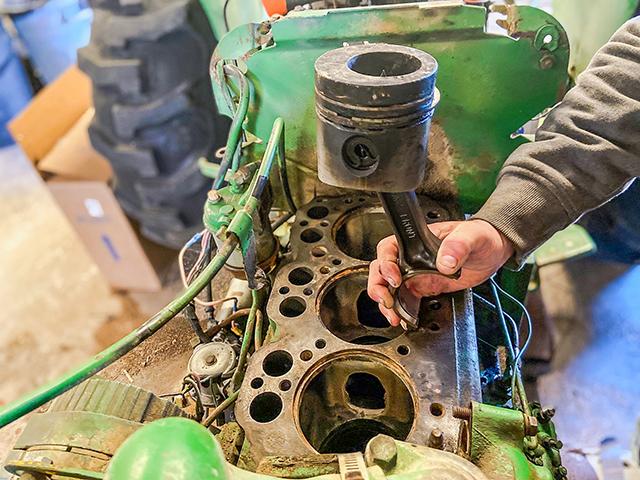Ask the Mechanic
Engine Cylinder Wear
READER: I have not overhauled that many small tractor engines, but now that I am retired, I plan to do more. There are two things that I have always wondered after I tear down an engine for rebuild. The questions are: Why, when looking at the front of the engine, is the No. 1 cylinder usually worn the most, and the other question is why does each cylinder show more wear (even scratches) on the left side of the cylinder wall.
P[L1] D[0x0] M[300x250] OOP[F] ADUNIT[] T[]
STEVE: The reason that the No. 1 cylinder is usually worn the most is because of two factors that are going on as the engine runs. One reason is because the No. 1 runs hotter than the other cylinders. The coolant flow through an engine usually runs down through the radiator, giving off its heat. Then, through the engine block and head, through the top radiator hose and into the radiator. This flow allows the No. 1 cylinder to receive the coolant last, making the coolant the hottest it will be at that point before it heads back down through the radiator and giving off its heat.
The reason the wear is usually more on the left side of the cylinder (looking at it from the front of the engine) is because this is the side called the "major thrust" side of the engine as the engine turns clockwise. The piston is "thrust" into the left cylinder wall through the explosion on the power stroke because the rod on the piston is slanted somewhat in order to deliver the power of the explosion to the crankshaft. This "cock" forces the piston to the left side of the cylinder wall, creating more pressure on the rings on that side. As the rings wear out, the piston skirt can rub the cylinder wall, creating scratches.
**
-- Write Steve Thompson at Ask The Mechanic, 2204 Lakeshore Dr., Suite 415, Birmingham, AL 35209, or email mechanic@progressivefarmer.com, and be sure to include your phone number.
[PF_0923]
(c) Copyright 2023 DTN, LLC. All rights reserved.




